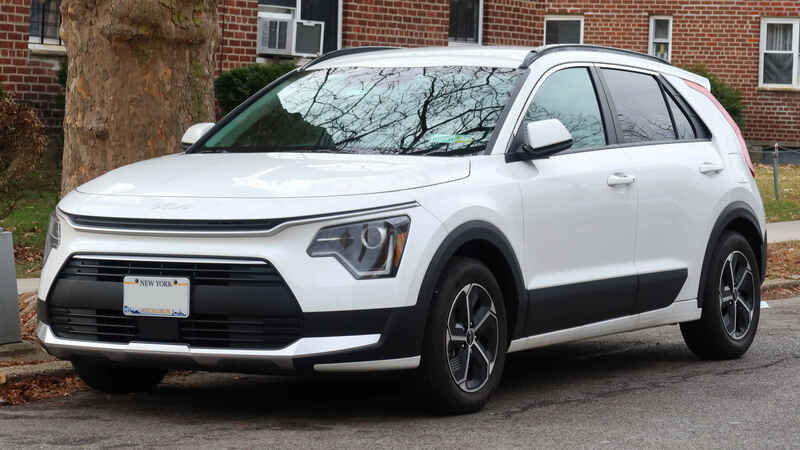Remote-Driven Ride-Hailing: A New Alternative to Taxis
- Published 28 days ago
- Robotaxis
- International
A new ride-hailing service combines teleoperation and carsharing, using remote drivers to deliver EVs before riders take over, reshaping urban mobility and taxi alternatives.

A new ride-hailing service in Detroit is introducing a unique approach to urban mobility. Instead of relying on fully autonomous taxis or traditional ride-sharing, Corktown Carshare offers a hybrid model. A remote operator delivers a Kia Niro EV to the rider's location, after which the customer takes control and drives the vehicle. Once the trip is completed, the car is remotely guided to the next user or a charging station.
This initiative, developed by Sway Mobility in partnership with Mapless AI, provides a cost-effective alternative to fully autonomous ride-hailing. While companies like Waymo have been operating over 200,000 robotaxi trips per week and Tesla is preparing to launch its own autonomous ride-hailing service, Corktown Carshare presents a more practical and accessible solution. The model differs from larger players in the industry, especially as some companies shift focus away from robotaxi investments.
Philipp Robbel, CEO of Mapless AI, stated:
"Having the user take on the driving after delivery makes this a significantly cheaper mobility option."
How Remote-Driven Ride-Hailing Works
Unlike traditional ride-hailing services, where a human driver remains with the vehicle, this system utilizes teleoperation. The remote driver sits at a control station with multiple screens, a steering wheel, an accelerator, and a brake pedal, similar to a driving simulator. This operator guides the vehicle through city traffic until it reaches the customer.
Once the customer assumes control, the car operates like a standard rental. After the trip, a teleoperator takes over and directs the car either to another rider or to a charging station if the battery is low.
Michael Peters, CEO of Sway Mobility, explained:
"For our use case—electric vehicle carshare—the purpose of remote driving is to increase the utilization of the fleet but not to offer a driven or chauffeured service."
The current pilot program includes a single Kia Niro EV operating within a two-mile geofenced area in Detroit. The service is expected to expand in the coming months, introducing new features such as a smartphone app for scheduling trips.
Implications for the Taxi Industry
The taxi industry has faced significant disruption due to ride-hailing apps, automation, and electric vehicle adoption. Corktown Carshare's hybrid model could introduce a new alternative, particularly in cities where fully autonomous taxis are not yet viable.
Unlike robotaxis that require expensive AI and sensor systems, this system relies on cost-efficient technologies such as cameras, LiDAR sensors, and onboard computers.
Philipp Robbel stated:
"For us, the unit cost is significantly less so we can use a Kia Niro EV off the shelf and we add to it our cameras, lidar sensors, and a low-cost compute unit."
If successful, this model could also be adapted for taxi services. Remote-controlled vehicle repositioning could reduce downtime and increase availability in high-demand areas. Additionally, the company is exploring the possibility of incorporating different types of vehicles, such as wheelchair-accessible cars and larger passenger vehicles.
Michael Peters stated:
"We’re using the technology to position and reposition the car. Plus, the ability to have different types of vehicles in the fleet. What if someone needs a wheelchair-accessible vehicle or a seven-passenger vehicle? Things like that can be delivered."
Challenges and the Future of Remote Driving
Despite its advantages, remote-driven ride-hailing faces challenges. A disruption in the network or high latency in communication could affect performance. To address this, vehicles are equipped with autonomous safety features that allow them to pull over safely and activate hazard lights if communication is lost.
Philipp Robbel stated:
"The vehicle has enough intelligence onboard to execute a minimum risk maneuver."
Public trust in fully autonomous vehicles remains low, but teleoperated systems may provide a transitional solution. Studies suggest that passengers feel more comfortable knowing a human operator is in control, even remotely. This approach could serve as a stepping stone toward widespread automation in urban transportation.
As the taxi and ride-hailing industries continue evolving, solutions like Corktown Carshare could play an essential role in shaping the future of urban mobility.
Latest Taxi Updates!
Headlines, Breaking News, and Top Guides—straight to you! Stay informed and ride smarter every day!
